Inside Boeing's Dreamliner (PHOTOS)
Top Goat jumps in the cockpit.
Top Goat jumps in the cockpit.
UPDATE May 30: I understand neither plane is the Dreamliner model ordered by Air New Zealand (which apparently hasn't yet flown). But it amuses me to contrast the glossy pics of the Dreamliner visiting Auckland featured in media today with the boxes-and-stuff-everywhere of the Dreamliner featured in our earlier report, below.
I prefer Vaughn's gritty, high tech version. But what do I know.
Nov 16, 2011: Boeing's high-tech 787-9 Dreamliner touched down in Auckland over the weekend (see NBR's preview here, and an update on Air NZ's $270 million plane splurge here).
Media was given limited access to the plane, but airforce pilot turned Goat Farmer Vaughn Davis managed to get inside the cockpit. He sent NBR this pic (click to zoom):
A few more for good measure:
Possibly this is why Air New Zealand isn't getting the Dreamliner until 2014. Looks like it'll take a while to tidy up (click to zoom).
The much-delayed Dreamliner is made from a high percentage of strong but lightweight composite materials. Boeing says this allows for better fuel efficiency, bigger windows, higher cabin pressure and humidity (meaning less dehydration), more headroom and a smoother ride.
Alas the Air New Zealand livery does not mean this is the airline's Dreamliner. Instead it's the aviation equivalent of a "temporary tattoo," Mr Davis quipped.

Don't steal.
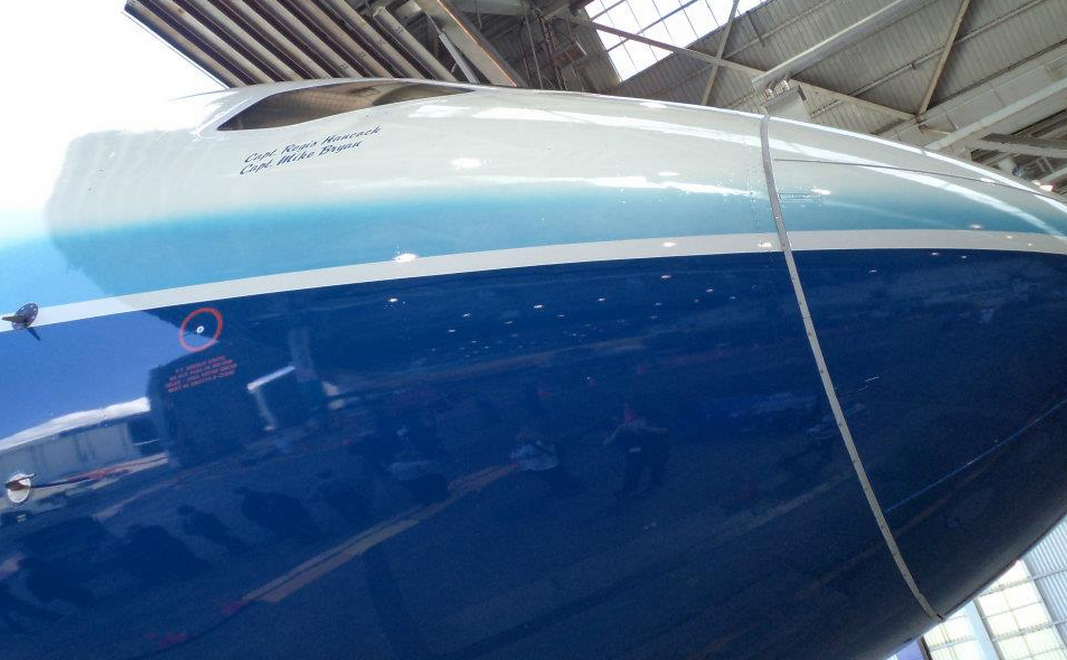
(Click to zoom.) "The Boeing 787 flight deck is deliberately designed to be practically identical to that of the Boeing 777, so pilots can easily transition between the two aircraft with just five days’ training. (Boeing pulled the same trick when they launched the 757 and 767 in the 1980s)," Mr Davis told NBR.
"Up front, the yoke and throttle arrangement Boeing has used since the 707 is still there, leaving computer game-style sidesticks to competitor Airbus. The big difference though is the bank of LCD displays: four big ones across the panel, with a slightly smaller one each side.
"The four big ones (we’re talking slightly twice the size of an iPad) flip between primary flight information, engine and systems info and map data as required. The smaller ones display information from the 'electronic flight bag' – maps and charts, basically, meaning the 787 is freed from carrying the huge stack of maps, approach charts and so on that international flights usually need to lug around."
"The biggest innovation on the cockpit though is straight out of Top Gun – a flip down “heads up display” or HUD [pictured above]. This is basically a clear plastic panel that sits in the pilots’ line of view, displaying essential information and removing the need to constantly shift your gaze down at the instruments and up at the windscreen," Mr Davis said. (Click to enlarge photo and you can make out the green lines of the HUD display.)

Against a white background, the HUD's green lines are more obvious.
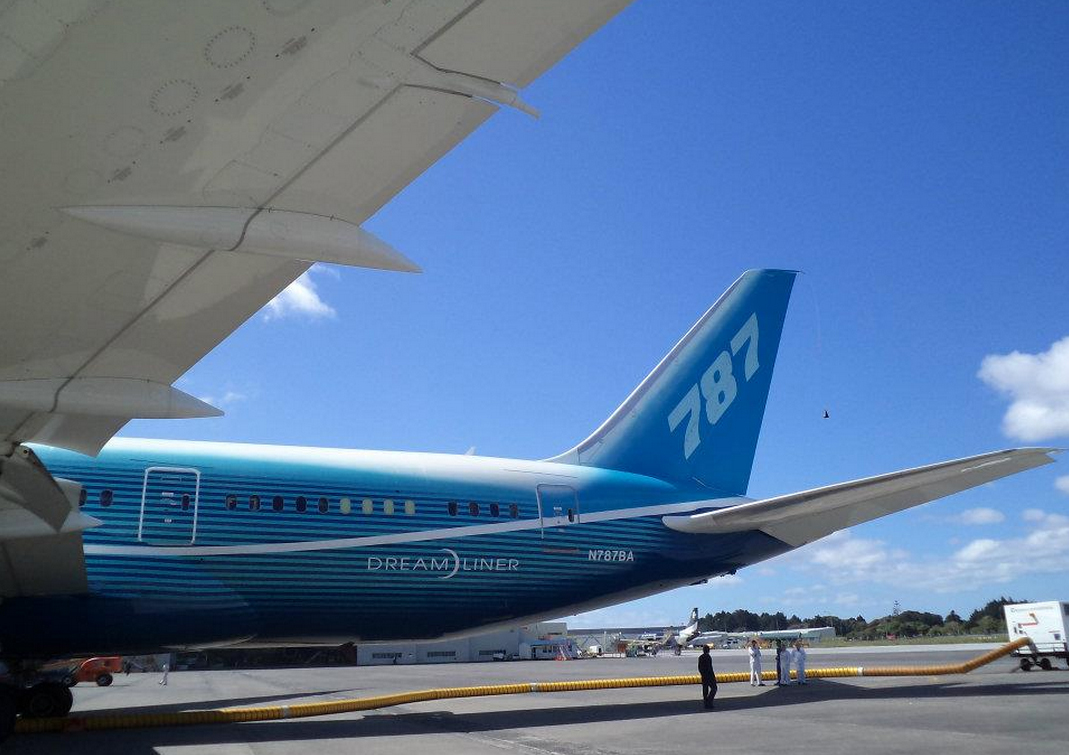
"The thing dangling off the tail extends 150 feet behind the aircraft so the engineers can measure air pressure without the aircraft itself influencing the reading.
"They use this to calibrate instruments that measure height, speed and rate of climb."
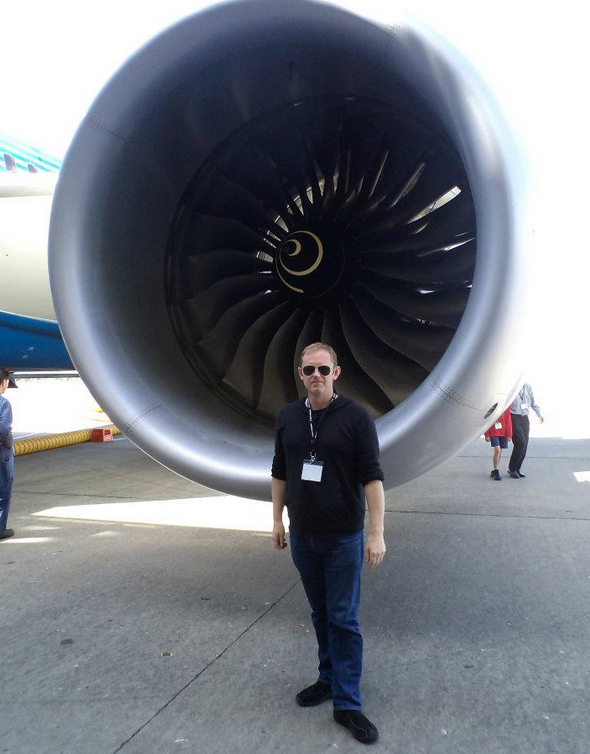
"The Rolls Royce Trent high bypass turbofan engine."
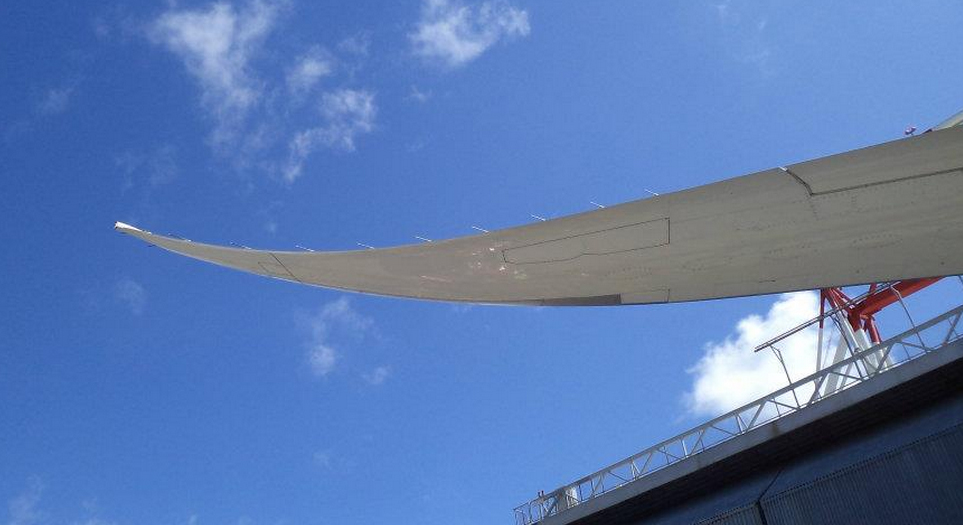
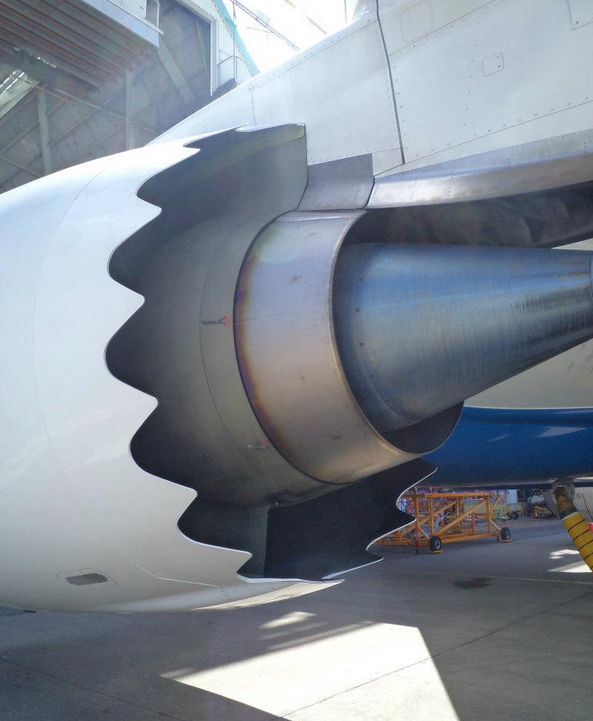
Mr Davis guesses this variegated engine trailing edge is to smooth the meeting of the high speed engine exhaust air with the static air and reduce noise.
Sign up to get the latest stories and insights delivered to your inbox – free, every day.